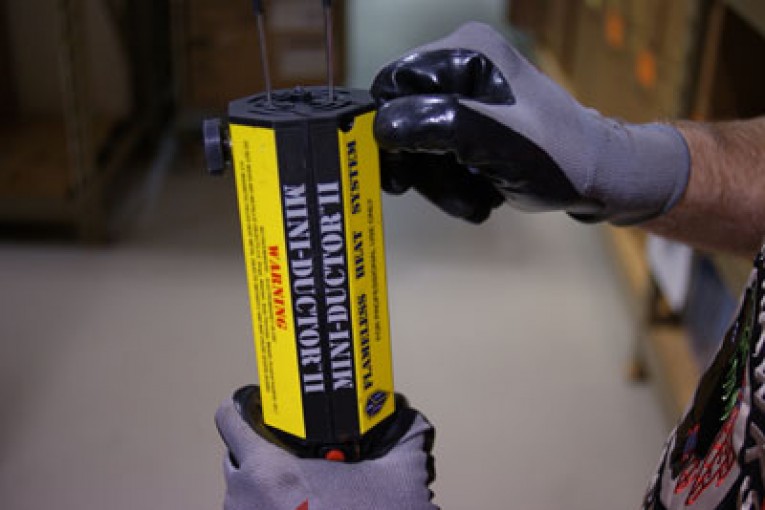
A quick, safe and efficient step-by-step guide from Induction Innovations.
In-line connectors, such as those found in use on brake lines, fuel and transmission lines are often difficult to repair. As the flats (nut portion) is smaller, it is not unusual to strip them (round off corners), with the help of either a vise grip or by cutting it off and patching in a repair section. This all takes time and therefore added expense for the customer.
Traditional methods use a naked flame torch and/or penetrating oil. These applications can be are inefficient and damaging. For example, using a naked flame does not pin point or focus the heat exactly where you need it. There is also the danger of an open flame near plastic shields and other components, since you cannot control were the flame goes.
The answer is invisible heat, produced by induction heating.
By using the handheld Mini-Ductor induction heating tool, there’s no longer any need to use a potentially dangerous torch or open flame to remove parts. Not only is it more reliable, faster and doesn’t damage the area around the part, its bendable coils get around corners or reach deep hard to access areas that a torch cannot get to.
The range includes the user friendly, handheld Mini-Ductor® series, available in in 240V, 110V and 12V battery powered, portable versions.
Here’s a step by step guide to removing in-line connectors with induction heat:
Select the right size coil for the intended purpose. The inside diameter of the coil should encompass the area desired to be heated.

Separate the coils windings at the centre just slightly wider than the object to be heated.

Insert the coil into the Mini-Ductor and secure the thumb screws tightly.

Place the coil over the In-line connector and into the gap you just created in the coil. Readjust coil opening if necessary.

Energize unit for around 10 seconds, depending on size and mass of the object, and attempt to loosen. Repeat as necessary being cautious not to overheat or turn red hot.

Safety notes
- If In-line connection is a tube it may have combustible liquids contained within.
- Liquids expand with heat and do not compress and may be flammable and may lead to an explosion.
- Tubing carrying such liquids should be drained first.
- If not the next weakest point in such a system may burst such as a rubber hose somewhere down the line.
- The system needs to be purged somewhere to prevent pressure from building up.
- This should only be done in a safe well ventilated area free of other combustibles and with a fully charged Fire Extinguisher at hand.
- Overheating may jeopardise the structural integrity of the connector/hardware. Use heat indicators or monitor with an IR Temperature Sensing Device. If compromised or suspected replace connector/hardware.









